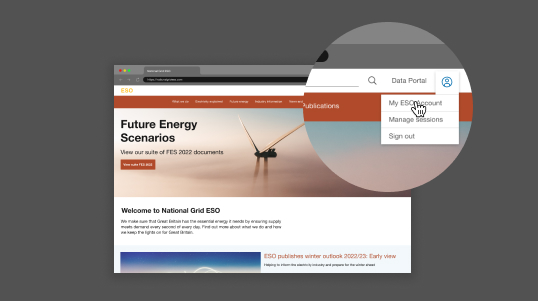
Recommendations for a zero-carbon electricity system
30 Jan 2020 - 4 minute read
National Grid Electricity System Operator publishes its Network Options Assessment for 2020
Julian Leslie, Head of Networks here at the Electricity System Operator (ESO), explains what the Network Options Assessment is and what it means for the Great Britain electricity transmission networks.
We are currently in the midst of an energy revolution with decarbonisation and net-zero driving the agenda. At the ESO, our mission is to enable the transition to a sustainable energy system and ensure the delivery of safe, reliable, and affordable energy for all. To help us achieve this, and as part of our role, we publish a series of documents throughout the year that aim to guide the industry in planning for the future.
The Network Options Assessment process is central to the development of the electricity system. The report sets out our best view on what solutions, network and non-network, need to be delivered to ensure the electricity transmission system can efficiently and effectively meet the needs of customers, society and the economy today and into the future. Our aim is always to strike the balance between investment and network management, achieving the optimal use of consumer’s money. Below, you can see a summary of the key stats taken from this year’s Network Options Assessment.
The recommendations we have set out in the Network Options Assessment, alongside the other work we are doing on the network development transformation, e.g. pathfinders, are key steps in helping us to achieve our ambition of operating a zero-carbon electricity system by 2025.
We believe an important element in continuing to deliver consumer benefit, is through increasing competition in networks. In this year’s Network Options Assessment, we have identified which of the options we have recommended to ‘proceed’ with, are likely to meet Ofgem’s criteria for onshore competition. As the Network Options Assessment develops and evolves, we will continue to open-up the playing field to allow non-network, commercial solutions[1] to compete against traditional, asset-based network solutions to help us solve challenges on the transmission network. This will drive more innovation across the industry and will ultimately increase affordability for consumers over time.
We are always looking to improve the way in which we do things here at the ESO and your feedback is important in how we shape our plans and decisions. We look forward to hearing what you have to say on the 2020 Network Options Assessment, and working together to deliver a net-zero future that is in the best interest of consumers.
Key stats:
- In this year’s Network Options Assessment, we assessed 147 possible reinforcement options for 2020. Four of these options were ESO-led commercial solutions:
- We recommend an investment of £203 million in 2020 across 42 projects. 39 of these projects are asset-based and three are ESO-led commercial solutions.
- We recommend that 56 of the projects are not progressed as they are currently not optimal.
- We recommend that 47 projects are put on hold, where investment decisions can be made in the future when there is more certainty.
- We have identified the need for four Anglo-Scottish reinforcements, to support and enable the increasing flows of electricity from the north to south.
- Over the next decade, we are anticipating that the south coast will have a growing volume of interconnector capacity between Great Britain and other countries. To support this increase in interconnection, a new transmission line between south London and the south east coast will be required.
- Our analysis has concluded that the recommended spend for the Transmission Owners is £11.1 billion. This £11.1 billion covers investment over the next 20 years, and we recommend an annual level of investment of approximately £203 million (for 2020/21).
- Once the assets are in service, the cost of investment will be recovered over the lifetime of the asset, which we assume to be a minimum of 40 years. This means that the cost is recovered in the most efficient way, for both current and future consumers.
- The result of this year’s analysis shows that a total interconnection capacity range between 18.1 and 23.1GW between Great Britain and Europe will provide optimal consumer benefit by 2032. However, the outcome of the future trading relationship negotiations between Great Britain and other EU countries, may have an impact on this analysis in future years.
[1] Commercial solutions are operational measures for managing constraints, procured by commercial providers. They can be thought of as measures that can automatically reduce generation (or increase demand) after a transmission system fault to allow more power to be exported from a region.
